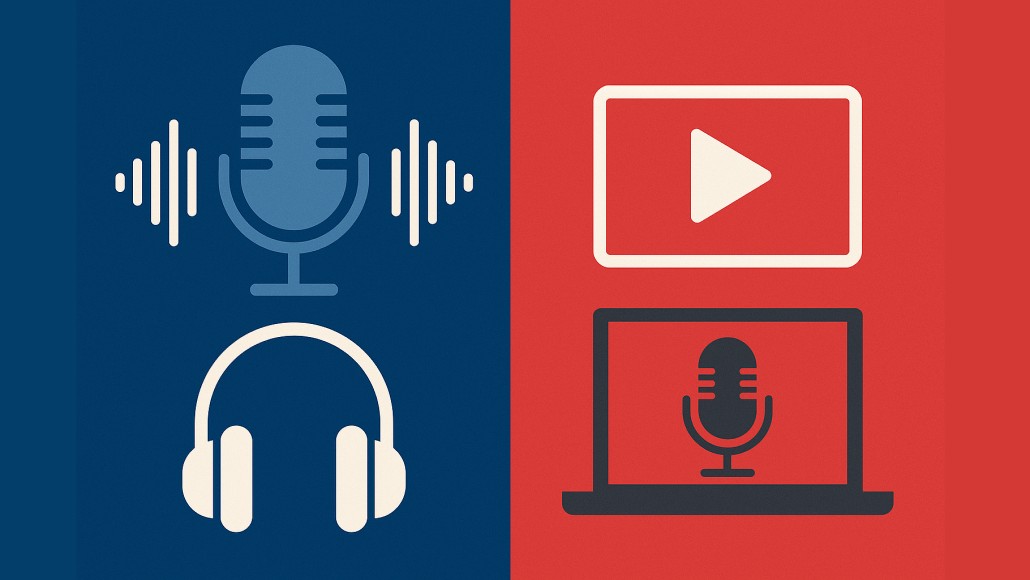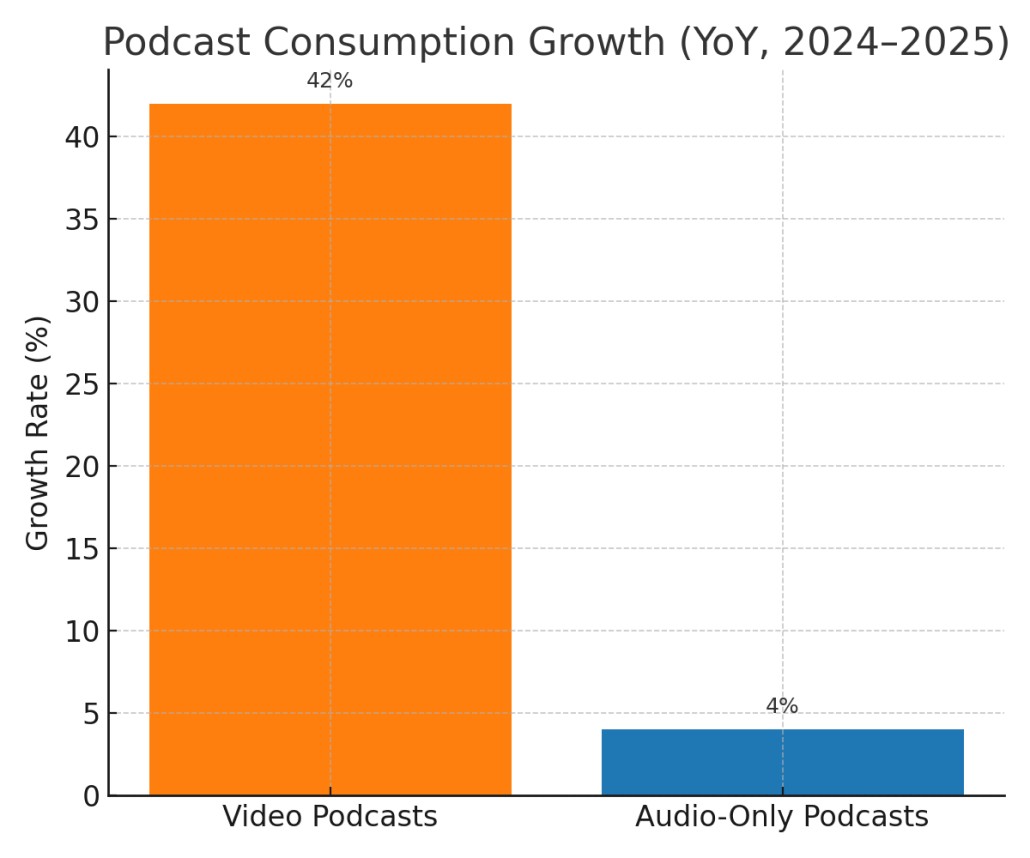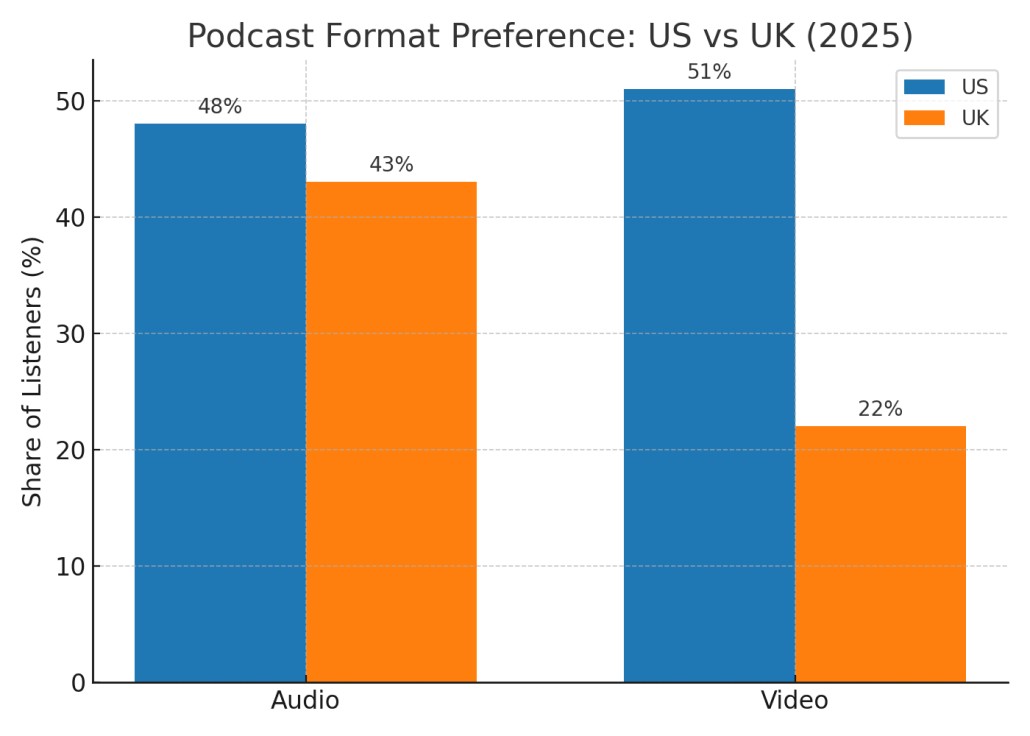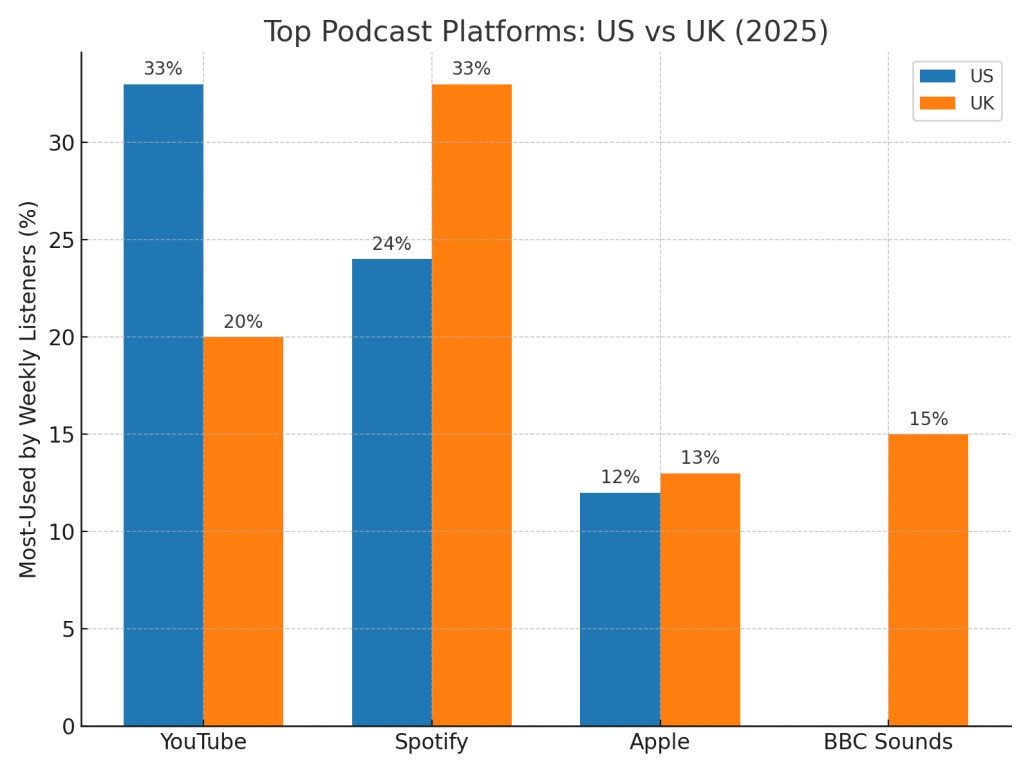
The Rise of Video Podcasts
Podcasting used to be synonymous with audio. People listened while commuting, exercising, or cooking — the appeal was hands-free, voice-only storytelling. But that’s changing fast. According to Edison Research’s Podcast Consumer 2025, more than half of Americans aged 12+ have now watched a video podcast, and over a third have done so in just the last month. Younger audiences in particular are blurring the line between “podcast” and “show,” expecting a visual element as part of the experience.
Platforms are responding. Spotify reports it now hosts over 250,000 video podcast shows, up from about 100,000 in 2023 — a signal that creators are racing to meet audience demand.

Why Video is Winning Attention
One reason for the surge is simple visibility. YouTube, long the home of music videos and vlogs, is now the most-used podcast platform in the US, edging ahead of Spotify and Apple Podcasts. Edison Research’s metrics show about a third of weekly podcast listeners say YouTube is their go-to service. The platform’s algorithm, ease of discovery, and the ability to clip and share short highlights make it especially appealing.
Engagement is also reflected in growth rates. Research by Zebracat shows video-podcast consumption grew about 42% year-on-year, compared to just 4% for audio-only. That gap highlights how much faster video is expanding.
For creators, video opens new doors: sponsorships with higher rates, better engagement, and content that can travel more easily across social channels. Viewers often feel a closer connection when they can see hosts’ expressions or guests’ reactions, which keeps them watching longer.
Audio Still Matters
That doesn’t mean audio is going away. The convenience of pressing play on a phone and listening anywhere remains unmatched. Edison’s Infinite Dial 2025 found that 48% of Americans have both listened to and watched podcasts — showing that for many people, it isn’t one or the other, but both.
Audio still dominates situations where video doesn’t fit — driving, at the gym, or during work. Production is also cheaper and simpler, meaning plenty of creators will continue to stick with audio-only shows.

UK Comparison
The US is not alone in seeing a rise in video podcasts. UK audiences are showing similar — though slightly slower — shifts. YouGov data from 2024 showed that 13% of UK podcast tune-ins preferred video, while 59% still preferred audio-only. By mid-2025, YouGov reported that 22% of UK adults consumed podcasts in video format, compared with 43% in audio. Among those who use both, nearly half (48%) now prefer video, suggesting that younger and more diverse audiences are driving the shift.
Platform preferences also highlight differences. Edison’s UK Podcast Consumer 2025 report found that Spotify leads with 33% of weekly podcast users, followed by YouTube at 20%, BBC Sounds at 15% and Apple Podcasts at 13%. This shows YouTube is growing as a podcast platform in the UK too, though Spotify retains the lead.

A Hybrid Future
What we’re seeing is less a replacement than an evolution. Video podcasts are carving out more of the market, especially among younger listeners, while audio continues to thrive thanks to its portability. Edison Research’s ranking of the top 50 US podcasts now includes more shows with video elements than ever before, a sign of the hybrid path ahead. In the UK, the same pattern is emerging — video is climbing, but audio remains dominant.
Bottom Line
Podcasting is no longer just about audio. With YouTube leading US platform use, Spotify rapidly expanding video hosting, and UK audiences showing growing interest in video podcasts, the format has become central to the future. But audio’s flexibility ensures it remains essential. The most likely outcome is hybrid podcasting — creators offering video when it adds value, and audio where convenience matters most.




